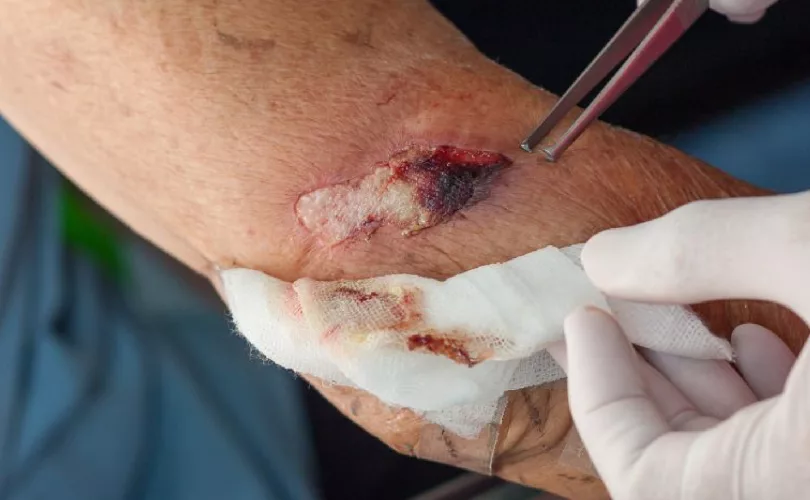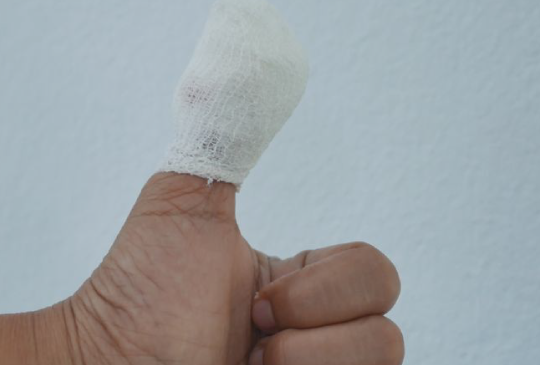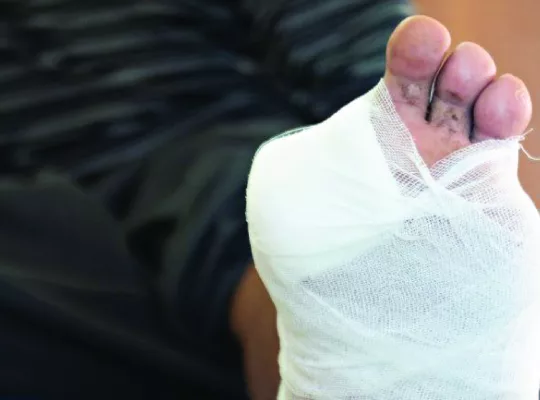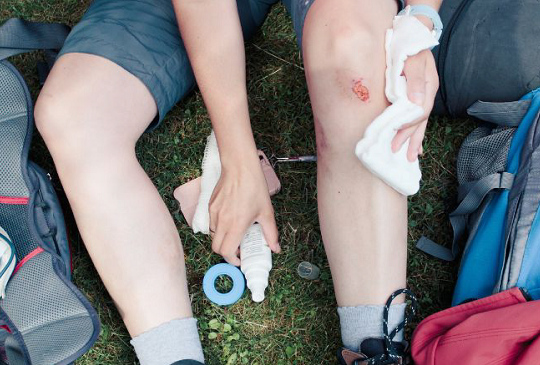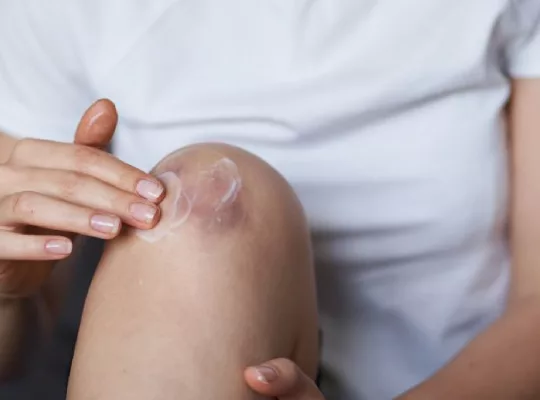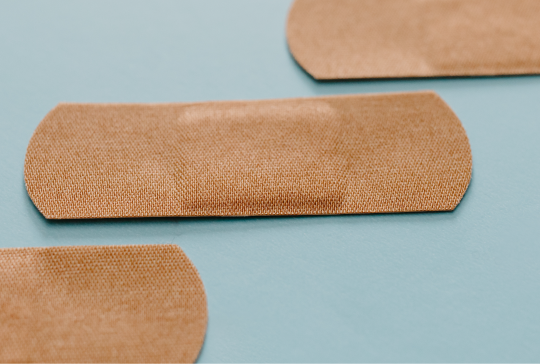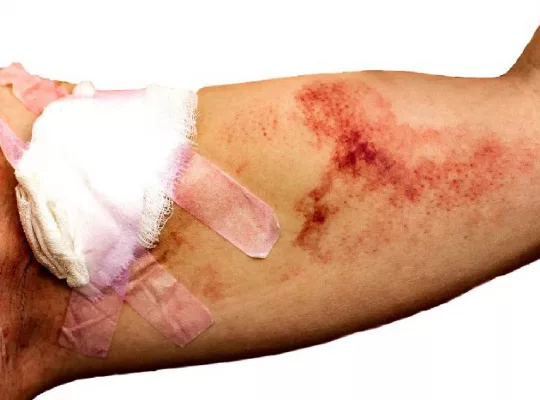Cuts and lacerations are common injuries that everyone experiences at some point. These wounds vary in type and severity, ranging from superficial abrasions to deep lacerations. Puncture wounds, such as a pin-sized hole, can be deceptively problematic. Despite their small size, they often bleed persistently and pose unique challenges in wound management.
The persistent bleeding from a pin-sized hole can be puzzling. This phenomenon can be attributed to several factors, including the wound’s depth, the body’s location, and underlying health conditions affecting blood clotting. A pin-sized hole won’t stop bleeding? Understanding why such minor injuries continue to bleed is crucial for practical first aid and preventing complications, such as infection.
Why Cuts Bleed
When cuts occur, they damage the skin’s protective layer, exposing and tearing the blood vessels beneath. This damage allows blood to leak out. The severity of bleeding depends on the size and depth of the cut: minor cuts affect small vessels near the surface, resulting in minimal bleeding, while deeper cuts can rupture larger vessels, leading to more significant blood loss.
Blood vessels play a vital role in circulating blood throughout the body. Veins carry blood back to the heart, while arteries distribute it to organs and tissues. The heart is a powerful pump, continuously pushing blood through these vessels. When a cut happens, the heart’s pumping action ensures that blood continues to flow, causing bleeding until the injury is sealed.
The body has a natural mechanism to halt bleeding. When a blood vessel is injured, it releases chemicals that activate proteins in the blood. These proteins and platelets form a clot that plugs the damaged vessel, visible externally as a scab. Applying pressure to a cut assists in this process by pressing the vessel walls together, slowing blood flow, and facilitating clot formation. This innate response is essential for preventing excessive blood loss and initiating the healing process. You can also use trauma pads or Combat Application Tourniquet to stop bleeding.
Types of Cuts
Avulsion
Avulsions are severe injuries where the skin and underlying tissue are torn away entirely or partially. They are often the result of violent incidents like explosions, severe accidents, or gunshots. Avulsions bleed heavily and rapidly, and they require immediate and intensive medical treatment to manage the bleeding and repair the damage.
Laceration
Lacerations are deep cuts or tears in the skin caused by sharp objects like knives or machinery. They can bleed profusely and quickly and require immediate attention. The depth and severity of lacerations can vary, sometimes affecting underlying tissues and necessitating stitches.
Abrasion
Abrasions happen when the skin is scraped. These wounds, like road rash, usually don’t bleed a lot but can be painful. Cleaning the injury thoroughly is essential to prevent infection, as dirt and debris often get embedded in the skin.
Puncture
Puncture wounds are small, deep holes made by sharp, pointed objects such as nails, needles, or even bullets. While they might not bleed heavily, they can reach deep into the body and cause internal damage. Punctures are particularly prone to infection, so medical evaluation and tetanus shots are often necessary.
Wound Treatment
Numerous small wounds are prone to self-medication. To start wound treatment, make sure the wound is clean and free of debris by disinfecting and cleansing it. When dealing with bleeding wounds, a Body Fluid Clean Up Kit can help maintain hygiene and prevent the spread of infection by safely handling blood and other bodily fluids. Put direct pressure on the damaged region and elevate it to stop the swelling and bleeding. Cover the wound with a bandage or sterile dressing. Without one, very small wounds could recover quickly. Make sure the wound is clean for around five days. Getting adequate sleep is important for recuperation.
In certain cases, medical assistance from a professional is required. If a cut goes deeper than half an inch, see a physician. Seek medical attention if the bleeding persists for more than 20 minutes or if applying direct pressure doesn’t stop it. A medical practitioner should also evaluate wounds from significant accidents. In cases when bleeding is heavy or persistent, particularly from puncture wounds, more care to avoid infection and maybe a tetanus injection may be necessary.
A pin-sized hole won’t stop bleeding? For more severe wounds, doctors use various methods to ensure proper healing. After the wound has been cleaned and perhaps numbed, sutures, skin glue, or stitches may be used to close it. The physician may decide to leave the incision exposed to allow natural healing if there is a significant risk of infection.
Pain management and antibiotics might be necessary to prevent infection. In severe cases, surgery could be required. Proper bandage and dressing care is crucial for preventing infection and promoting healing.
How Do I Treat A Wound That Won’t Stop Bleeding?
If a wound continues to bleed despite initial efforts, it’s crucial to take further action promptly. Begin by applying firm, continuous pressure directly on the wound using a clean cloth or bandage.
Maintain this pressure for 10 to 15 minutes without lifting it to check if the bleeding has stopped. Elevate the injured area above the heart level to reduce blood flow to the wound, which can help slow the bleeding.
If the bleeding persists, seek medical attention immediately. This is particularly crucial if the wound is deep if the blood is spurting, or if the bleeding continues despite direct pressure and elevation. While waiting for professional help, keep applying pressure to the wound. Avoid removing any objects embedded in the injury, as this can increase bleeding. Instead, apply pressure around the object.
If the bleeding is severe and life-threatening, consider using a tourniquet as a last resort. Place the tourniquet between the injury and the heart, tightening it until the bleeding significantly slows or stops.
Be aware that using a tourniquet can cause damage to tissues and should only be used when necessary. Always follow up with professional medical care to ensure proper treatment and address any complications.
Conclusion
Cuts and lacerations vary in severity, from superficial scrapes to deep wounds that require immediate attention. Puncture wounds, like those from a pin-sized hole, can bleed persistently despite their small size. Understanding why this happens involves considering wound depth, location, and clotting issues.

